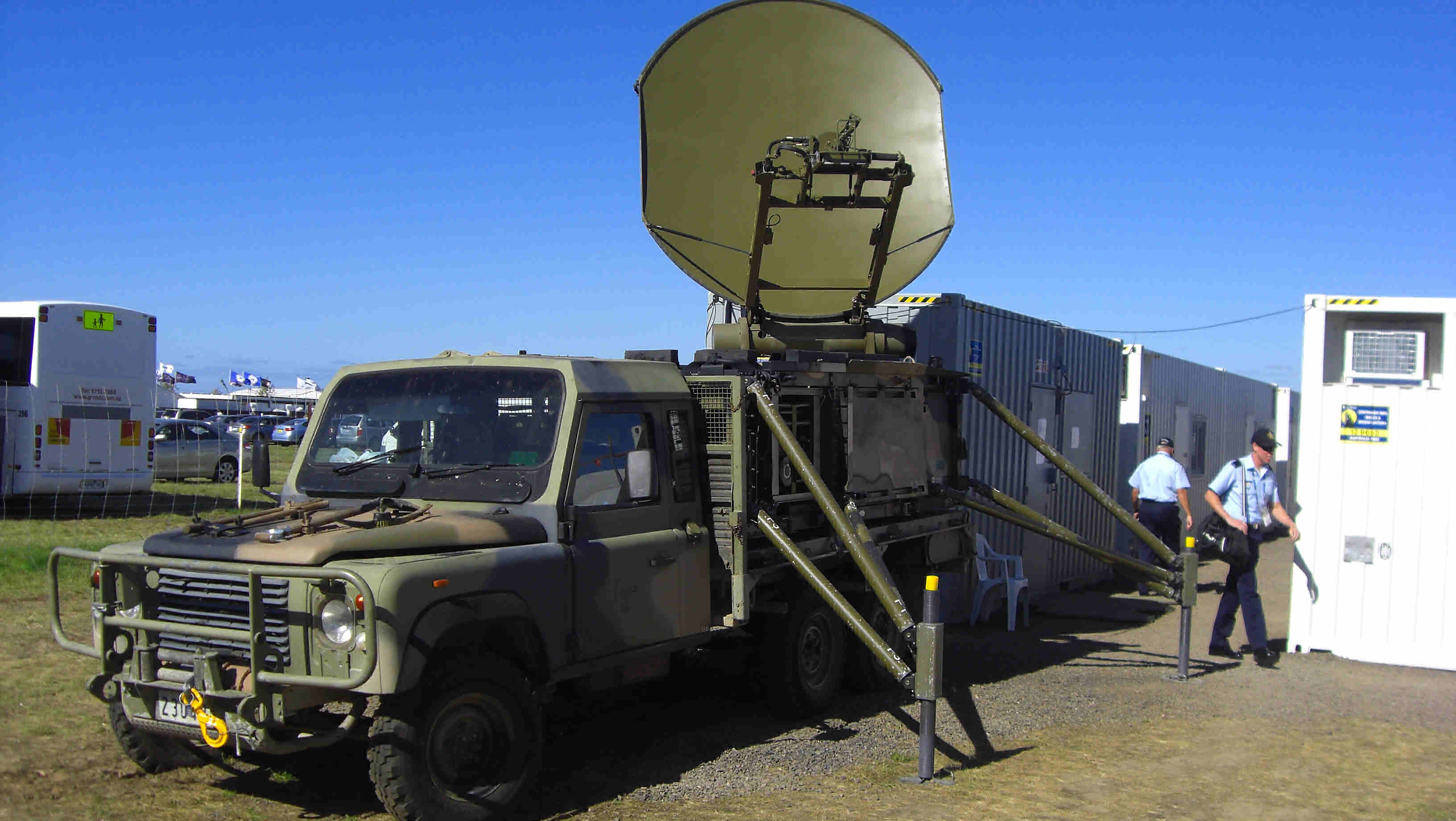|
Radschool Association Magazine Avalon Air Show Special |
|
|
Privacy Policy | Editorial Policy | Profit Policy | Join the Association | List of Members | Contact us | Index | Links | Print this page |
|
|
The RAAF
|
|
|
The RAAF.
On the 20th September, 1912, the Australian Minister of Defence, Senator George Pearce, approved the formation of an Australian air arm and shortly after, on the 7th March 1913, the Australian Government announced the formation of the Central Flying School (CFS) and Aviation Corps which was established at Point Cook.
At the end of World War 1, the AFC was disbanded and Australia had no air arm until the formation of the Royal Australian Air Force on the 31st March 1921. Back then, the RAAF consisted of 151 personnel, 130 Airman and 21 Officers and this was gradually expanded to 791 Airman and 108 Officers.
In late 1944, the RAAF peaked at over 182,000 personnel and 6,200
aircraft in 61 squadrons. In 1945, Australia had the fourth-largest
air force in the world (after the USA, USSR and UK). Over
2011 is the 90th anniversary of the RAAF and as such they had a considerable presence at the Air Show. Most squadrons were there showing off their new and in a lot of instances, impressive, hardware.
|
|
|
41 WING.
The RAAF’s Surveillance and Response Group has a number of personnel spread across Australia working in the following areas:
41
Wing is
based at Williamtown and commands all of the Air Defence operational
and training units. Spread across Australia, these units include 3 Control and Reporting Unit
(3CRU) and Surveillance and Control Training Unit (SACTU) located in
Williamtown; 114 Mobile Control and Reporting Unit (114 MCRU) in Darwin and 1 Radar
and Surveillance Unit (1 RSU) in Adelaide.
114 MCRU was formed as 14 (Mobile) Fighter Sector on the 23rd May 1943 at Camden, New South Wales. It was deployed to PNG and became operational there on 27 June. In January 1945 it was withdrawn to Brisbane and was eventually disbanded on 1 April 1948. It was reactivated in late 1955 and on the 12 March 1956, was renamed No. 114 Mobile Control and Reporting Unit. It moved to Butterworth in mid-1958 and remained there as part of the British Commonwealth Far East Strategic Reserve until being disbanded again on 31 October 1966. On April Fool’s Day, in 1968, it was once again reactivated at Amberley and was equipped with the 2,700 – 2,900 MHz AN-TPS 27 radar. Later in 1985, the squadron was re-equipped with the AN-TPS 43 which was on display at the Air Show (above).
In June 1997, 114 MCRU was once again on the move, first to Tindal then in 2000 to its current deployment area in Darwin. In 2005 it was equipped with the Lockheed Martin phased array radar the AN/TPS-77 (above).
This radar can be transported in a C-130 or by 2 medium size trucks and can be set up in less than 30 minutes. Once operational, it provides detection and tracking against targets ranged out to 450 km at elevations up to 100,000ft. |
|
|
3 of the blokes who were attached to the Radar. L-R: John Sykes, Leigh Gordon and Anthony Whitney (Click the pic for a clearer view) |
|
|
The Radar unit, along with its associated equipment, was driven down from Darwin and after the show ended, the Groundies had it packed away and ready to head north again in no time.
3 fit young blokes, one dirty big truck, a RAAF fuel card, a couple of changes of clothes and a bucket load of imprest for food and accommodation - half their luck!! If it had been me, I think I’d have been very tempted to take the scenic route back to Darwin, via Perth.
44 Wing.
44 Wing provides air traffic control services at 9 RAAF bases and also at HMAS Albatross and Oakey Army base. The Wing was first formed in December 1942 at Adelaide River in the NT and then disbanded in August 1944. Although RAAF Air Traffic Controllers continued to operate from many RAAF bases, it wasn’t until November 2000 that the Wing was reformed and all ATC units were brought under the control of the one unit. It has its headquarters at Williamtown.
In April 2010 RAAF Air Traffic Control Officers (commonly known as ATCO's) were renamed Joint Battlefield Airspace Controllers (JBAC) to more accurately reflect their role of encompassing both domestic ATC as well as their tactical role providing airspace coordination and control in military operations.
No 1 Combat Support Squadron (1CCS)
from Richmond
had one of its Mobile Air Traffic Control Towers on
They are a far cry from the little VW combis that were used some year’s back (see the Combi story HERE and HERE)
|
|
|
Sgt Darrin Casement (groundy, but we won’t hold that against him) fires up and tests his pride and joy, the mobile control tower. (Click the pic for a clearer view) |
|
|
(Click the pic for a clearer view) |
|
|
ACS.
Back in 1941, the RAAF formed the Airfield Construction Squadrons which were given the task of building airfields needed during the War. After the outbreak of peace, ACS developed facilities on the Australian Mainland and also served with the occupational forces in Japan, built the airfield at Butterworth during the Malayan Emergency and developed facilities at Phan Rang and Vung Tau in South Vietnam.
Over the period 1963 to 1971 the Squadron was on the move, with its headquarters transferring from Darwin to Tindal to Amberley and in 1971 to Learmonth and finally on the 13th December, 1974, ACS was disbanded.
You can read the ACS story HERE.
These days, the job is done by the RAAF’s Airfield Engineering Squadron which is based at Townsville and which has some impressive machinery at its disposal. It undertakes major tasks such as the construction of new buildings and large scale redevelopment works. Today the RAAF is focused on improving the existing operational airfields in the northern regions of Australia to enhance its effective forward deployment capability.
Such airfields include Scherger on Cape York Peninsular in North Queensland (completed 1998) and Curtin in Western Australia (1988). In recent years, major construction works and redevelopments have been undertaken at Tindal (NT), Learmonth (WA), Townsville and Darwin for tactical fighter and strike reconnaissance aircraft.
The replacement value of existing facilities throughout the Defence Estate is currently estimated at $13 billion and consists of 410 separate properties and in the order of 3 million hectares of land. |
|
|
|
|
|
(Click the pic for a clearer view) |
|
|
The C130. |
|
|
What Air Show would be complete without the workhorse of the skies, the mighty old Herc. These days the RAAF’s Hercs are all operated by 37 Sqn which started its Herc life back in 1966 when it got the E model, 8 years after 36 Sqn, the senior Herc Squadron, had started to fly the C130A’s. 36 Sqn’s A Models were replaced with the H model back in 1978 and 37 Sqn’s E Models were replaced by the J Model in 1999.
The RAAF was the second Air Force in the world to operate the Herc, after the USAF.
While now over twenty years old, the old H model, with its large low-pressure tyres and an excellent short take-off and landing capability, is able to operate into remote areas on unpaved airstrips without support equipment. As a result of a series of upgrades and modifications, it is still one of the most capable tactical transport aircraft in the world. The primary role of the “H” is the movement of personnel and equipment within a combat zone. This includes special forces insertion, parachuting (both static-line and free-fall) and the airdrop of support equipment such as 4WD vehicles, inflatable boats and artillery pieces.
A number of these aircraft are fitted with self-protection systems to improve survivability in hostile areas. This “self-protection” consists of a radar warning receiver as well as chaff and flare dispensers. The radar receiver identifies and locates the radar emissions of anti-aircraft artillery, surface-to-air missiles and/or fighter aircraft and when an aircraft is engaged by one of these threats, chaff (bundles of metallic micro-fibres) and flares can be ejected to defeat them. Tactical operations at night require the crews to utilise night-vision goggles for terrain avoidance.
We believe it was Ted the Mac who said that 37 Sqn only became a REAL squadron when it absorbed the machines and blokes from 36 – he could be right!!! |
|
|
(Click the pic for a clearer view) |
|
|
Above, the insides of the H model, showing its many useful roles, from stretcher bearer, troop carrier, para dropping and cargo carrying. It can carry 92 troops, or 64 paratroops, or 74 casualty stretchers or 19 505 kg (43 000 lb) of freight.
The C-17.
These days, 36 Sqn, by far the most experienced of the RAAF’s heavy transport Squadrons, (according to Ted the Mac anyway) operates the cavernous Boeing C17 Globemaster III aircraft. The RAAF accepted the first of its four C17’s in 2006 and they are based at Amberley, once again just proving that 36 Sqn is the smarter of the two as it had the brains to move north to the sun away from cold foggy old Richmond, whereas 37 Sqn stayed put.
The C-17 is a high-wing four-engine heavy transport which has a payload of 72 500 KG, more than three times the carrying capacity of the C-130 Hercules. It also cruises at 800 Klm/hour against the Herc’s cruise of 600 Klm/hour. This allows the ADF to rapidly deploy troops, combat vehicles, heavy equipment and helicopters anywhere in the world.
The all-up weight of an H model Herc is 70 308 kg – a bit less than the carrying capacity of the C-17. |
|
|
|
|
|
Below, the insides of the C17, looking towards the rear - click the pic for a clearer view. |
|
|
|
. |
|
We did notice though that ‘stuff’ in the aircraft was all neatly stowed away, not quite how it used to be in those old brown aeroplanes with round engines, apart from John Mac's aeroplane of course. |
|
|
|
|
|
The C17 is fitted with two hydraulic rams that pop down and stabilise the aircraft during the loading of heavy articles. Try as they might, the loadies are no longer able to lift the front wheel of the aircraft during loading – taken all the fun out of it really….
The Wedgetail.
Boeing was awarded the tender to supply the RAAF with its Airborne Early Warning and Control (AEW&C) aircraft in August 1999. We always thought that Alf Smith had built these things single handedly from the wheels up and was very surprised to learn at the Air Show that a whole bunch of people were involved in the project.
The Aircraft uses the Boeing 737-700 airframe jammed with new technology stuff designed and built by Northrop-Grumman, it’s antenna is attached to the top of the aircraft and is commonly called the Surf Board. |
|
|
|
|
|
The RAAF’s converted
737-700, which features state-of-the-art avionics, navigation
equipment and a hot dog flight deck along with an advanced identification
friend or foe (IFF) system and a highly
This large in-service fleet is supported by a world-wide infrastructure of suppliers, parts and support equipment. With its speed, extended range and ability to fly to altitudes of more than 40,000 feet, the 737-700 offers an ideal AEW&C platform.
The equipment is able to track air and sea targets simultaneously and can track high-performance aircraft while continuously scanning the operational area. More than 600 hours of wind tunnel testing have demonstrated the compatibility of the aircraft and the radar. |
|
|
The Hawk.
Shortly after
forming in March 1942, No 76 Squadron’s Kittyhawks were deployed to
Milne Bay, PNG, to confront the advancing Japanese. After the battle
of Milne Bay, 76 withdrew to Australia
After the war, No 76 Squadron was re-equipped with Mustangs and deployed to Japan for duty with the British Commonwealth Occupation Force. It returned to Australia in 1948, and converted to Vampires before deploying to Malta in 1952 to join NATO forces in the Mediterranean area. In 1960 it returned to Williamtown, converting to the Australian-built Sabres. In 1966 the Squadron was equipped with the Mirage.
The Squadron's fighter role came to an end in 1989 when the Mirages were replaced by the Macchi jet trainer and specially equipped PC-9 aircraft. In 2001, the BAE Hawk 127 replaced the Macchi aircraft.
|
|
|
|
|
|
The Hawk is operated by both 76 Sqn at Willytown and 79 Sqn at Pearce, but that’s practically another country over there. Newly-graduated pilots and pilots with experience on other RAAF aircraft are trained on the Hawk then go on to fly the F/A-18. The aircraft is customised to resemble a cockpit environment similar to that of the F/A-18 which minimises the amount of conversion training for pilots graduating to front-line aircraft.
No
76 Squadron's current operational role is to conduct Introductory
Fighter Training, Fleet Support and Close Air Support. To fulfil
these roles the Squadron is organised into two flights,
Operations Flight provides Fleet Support to the Royal Australian Navy and Close Air Support training to the Australian Army.
Under the nose of one of the RAAF’s 33 Hawks, where all the electric bits sit, the equipment might have been upgraded, the black boxes have certainly got a lot smaller and a lot lighter, but the wiring and the canon plugs look awfully familiar though the bee’s-wax string seems to have been replaced with cable ties, or as the RAAF calls them, Panduit Straps. |
|
|
The FA-18’s
The RAAF now operates two versions of the Boeing F/A-18 aircraft, the F/A-18F Super Hornets which are based at Amberley and the F/A-18A/B Hornets which are based at Williamtown. The aircraft below is the F/A-18A. |
|
|
|
|
|
The Boeing F/A-18F Super Hornet is a twin-engine multirole fighter aircraft. Designed and initially produced by McDonnell Douglas, the Super Hornet first flew in 1995 and production began in September 1997 after the merger of McDonnell Douglas and Boeing the previous month.
The RAAF ordered 24 of the F/A-18F aircraft in 2007 to replace its aging F-111 fleet and they entered service in December 2010. They will fill the gap between the F-111 and the F-35 Lightning which is expected some time in the near future.
The Super Hornet is about 20% larger than the F/A-18 Hornet and is 7,000 lb (3,200 kg) heavier at empty weight. It carries 33% more internal fuel, increasing mission range by 41%.
Very similar in shape, the easiest way to distinguished them is by their air intakes, the Super Hornet has rectangular intakes, while the Hornet’s are roundish.
The F/A 18A/B is one of the most potent fighter and strike aircraft in the world, the A signifying a single seat version and the B a twin.
Back in 1981, the RAAF ordered 75 Hornets, 57 A models and 18 B models, to replace the Mirage, the F/A designation signifying both fighter and attack capabilities.
Merchandise.
The RAAF had a large tented area dedicated to showing off its many unit’s various achievements and mixed in amongst all that lot there were many souvenir items up for grabs. |
|
|
|
|
|
As a tented area, it was very well done, air-conditioned, well set out, bright and airy and from what we could see, very popular with Mr and Mrs Public.
Anyone who has ever been camping, tent style, would certainly look upon these tents with ivory green eyes – they were magnificent, though you wouldn’t want to have to put one up, alone, in the dark and in the rain….
This is what they look like from the outside. |
|
|
COMMS.
|
|
|
|
|
|
So that all the RAAF chiefs could keep in touch with other RAAF chiefs, the groundies set up a satellite comm centre at the show which they had up and running in next to no time. This unit is maintained and operated by 1CCS at Richmond, and has been around for some time.
Aireys wonder why Groundies always build their stuff so big….. |
|
|
|
|
Back Go to: Home The Show The RAAF Civil Aircraft Military Aircraft Volunteers Forward
|
|
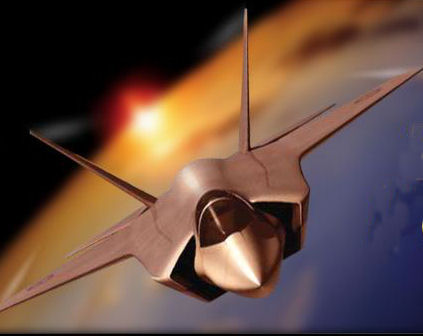
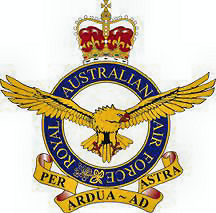
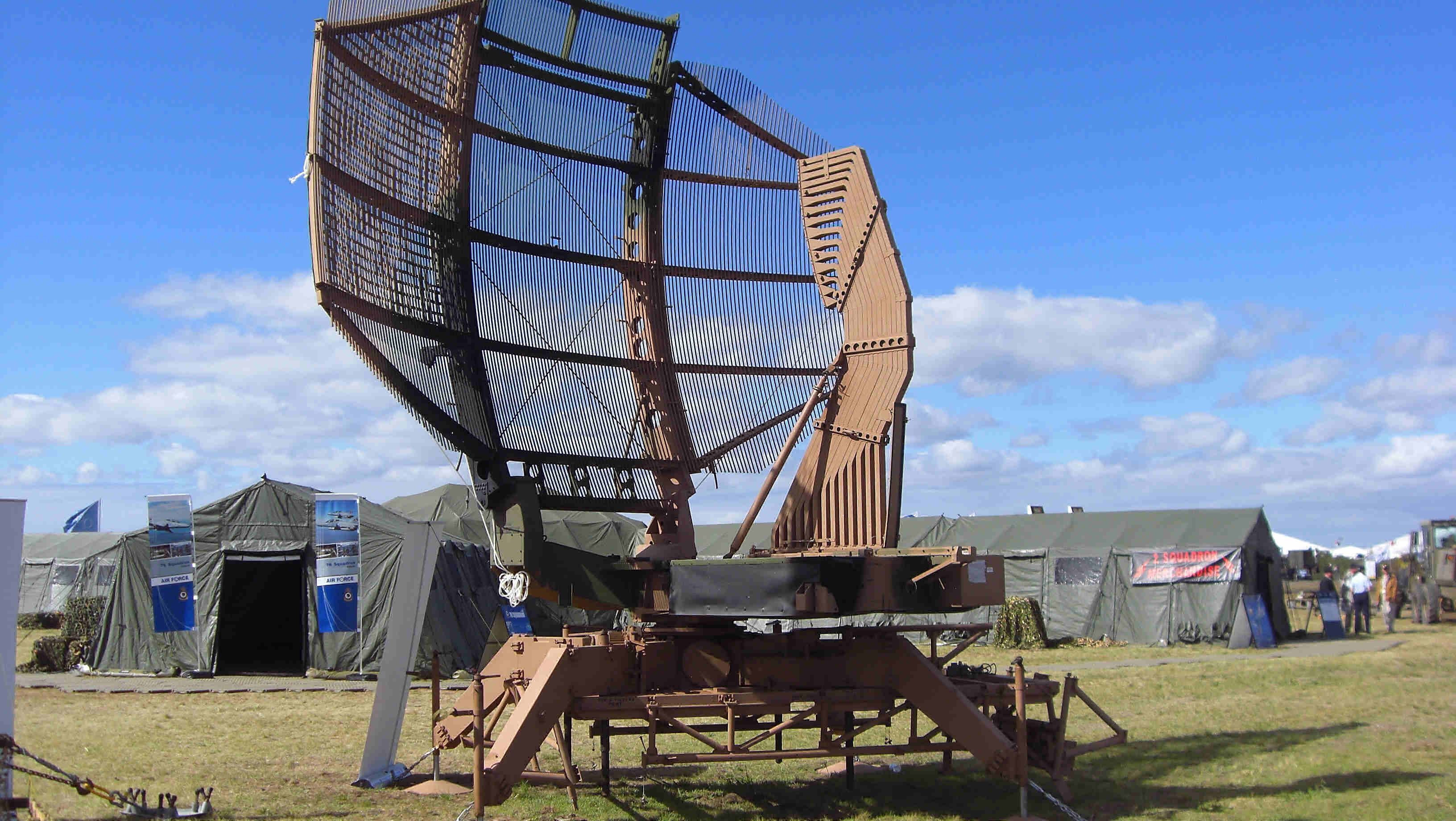
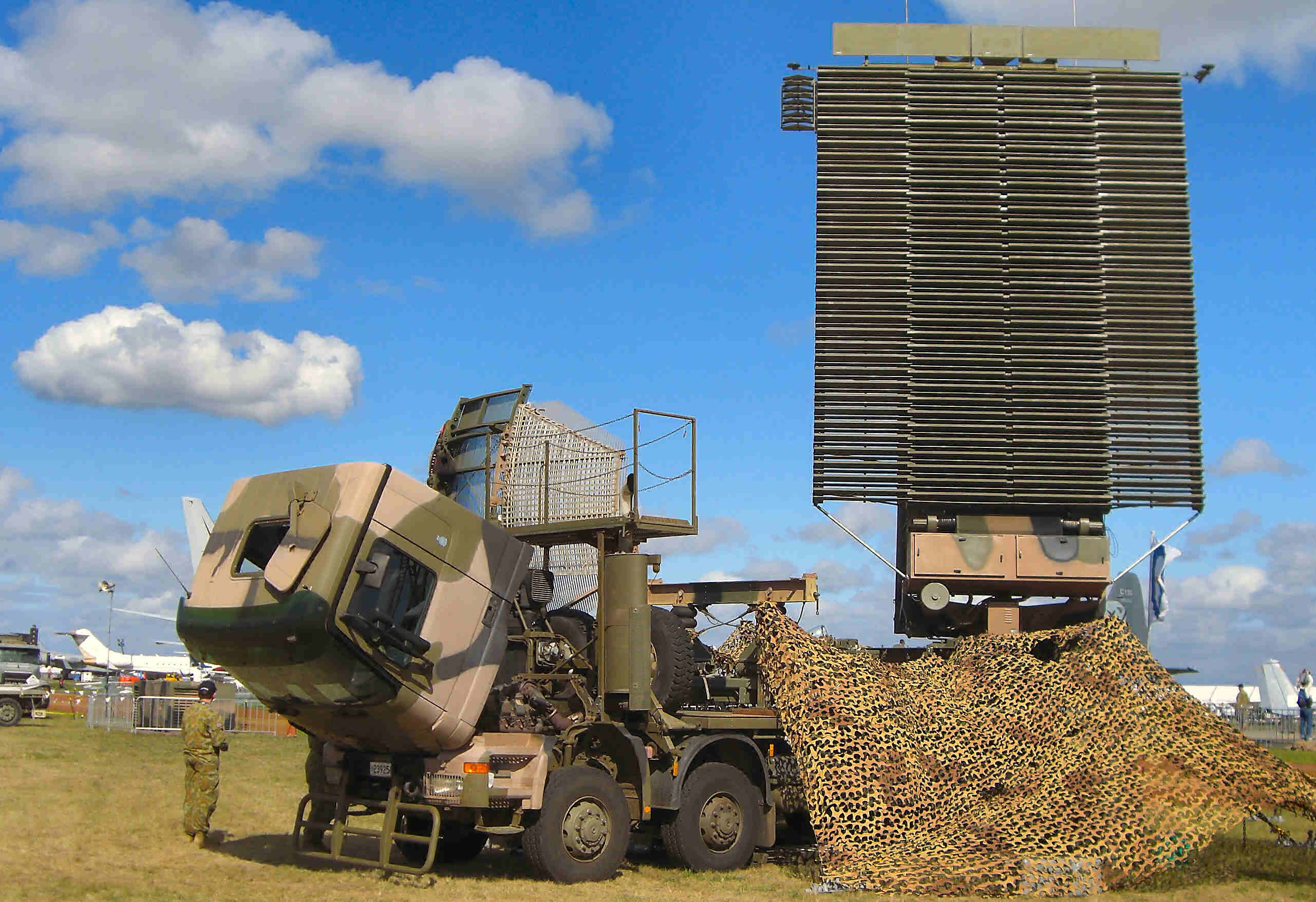
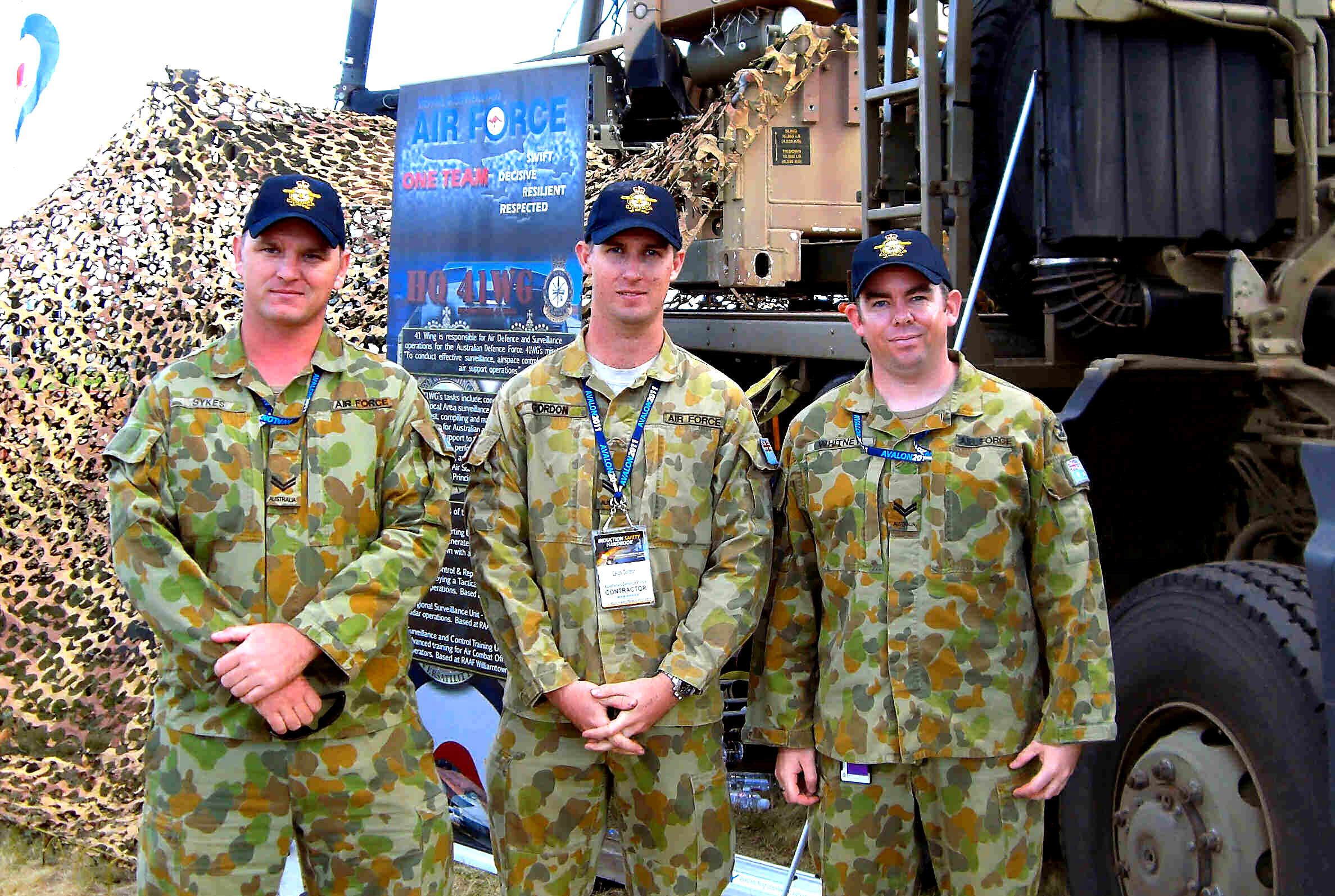
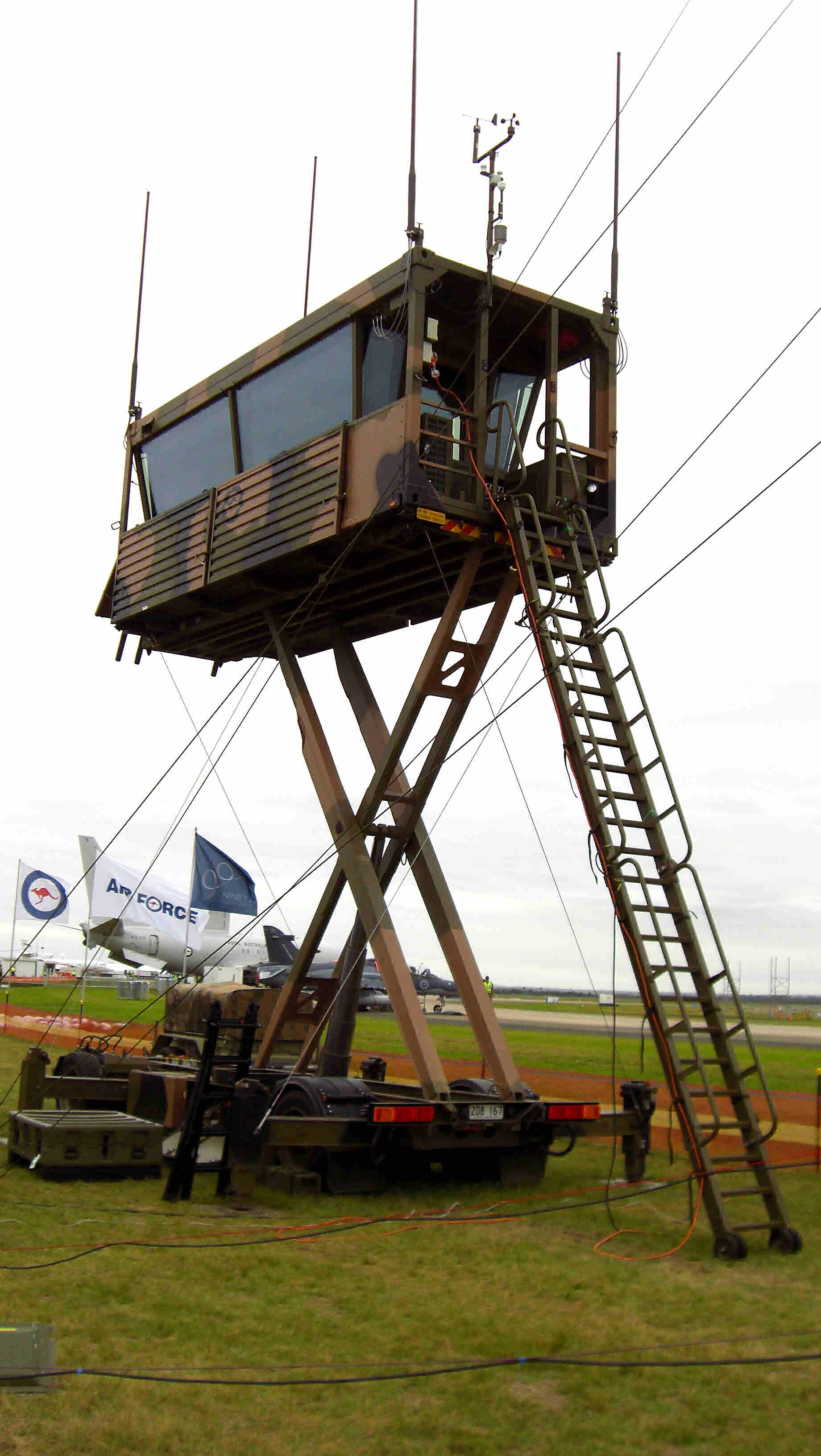
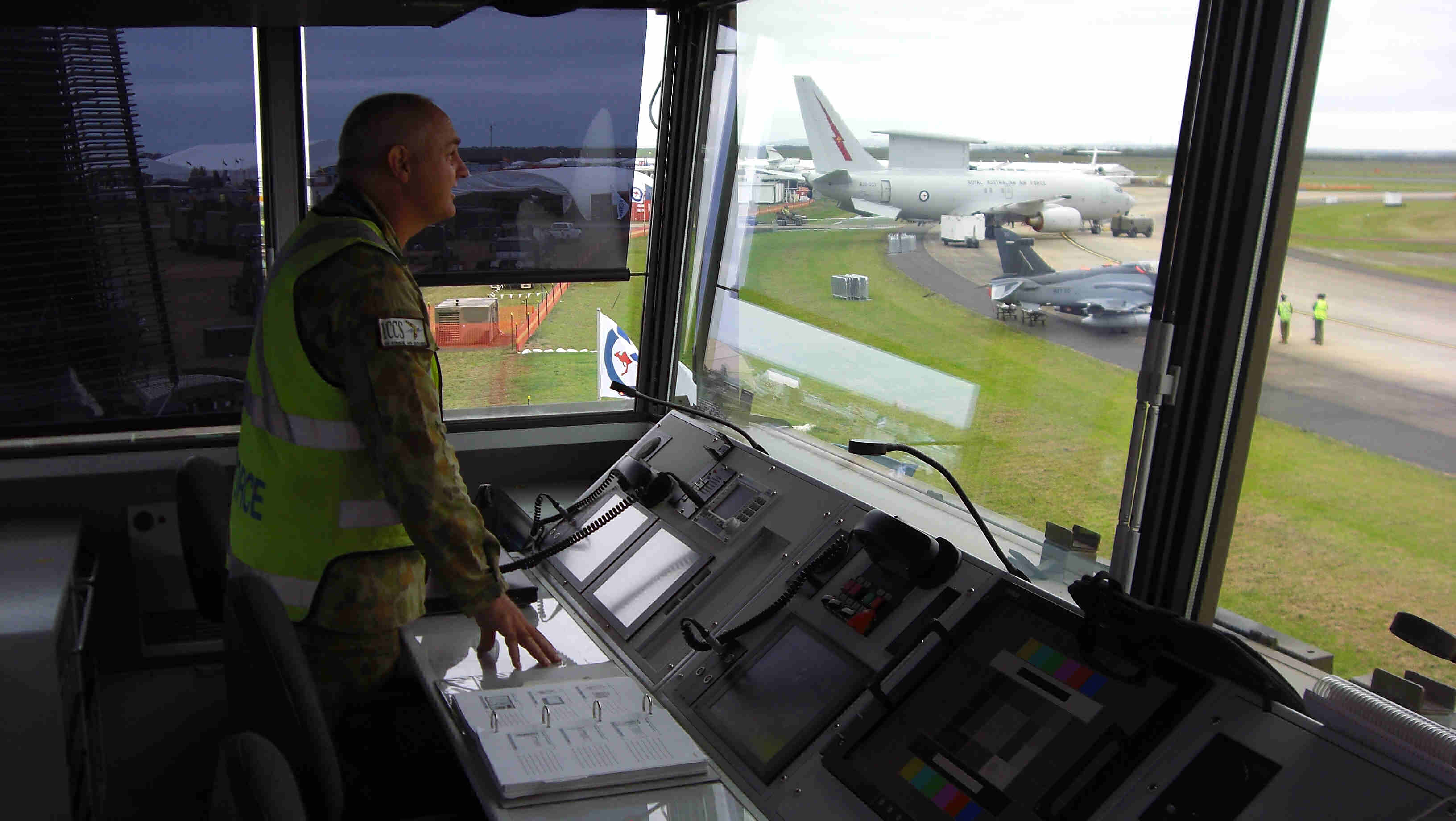
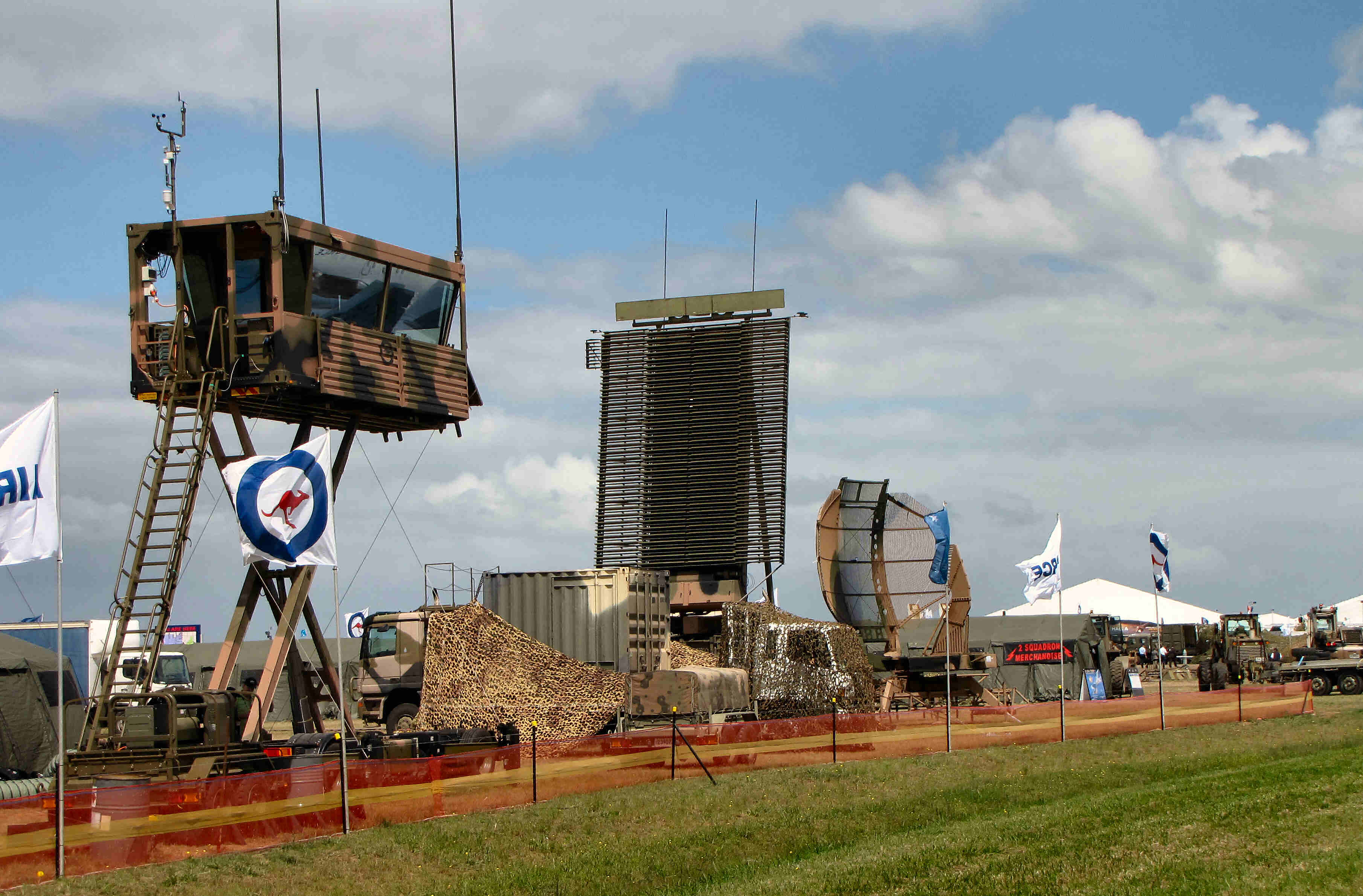
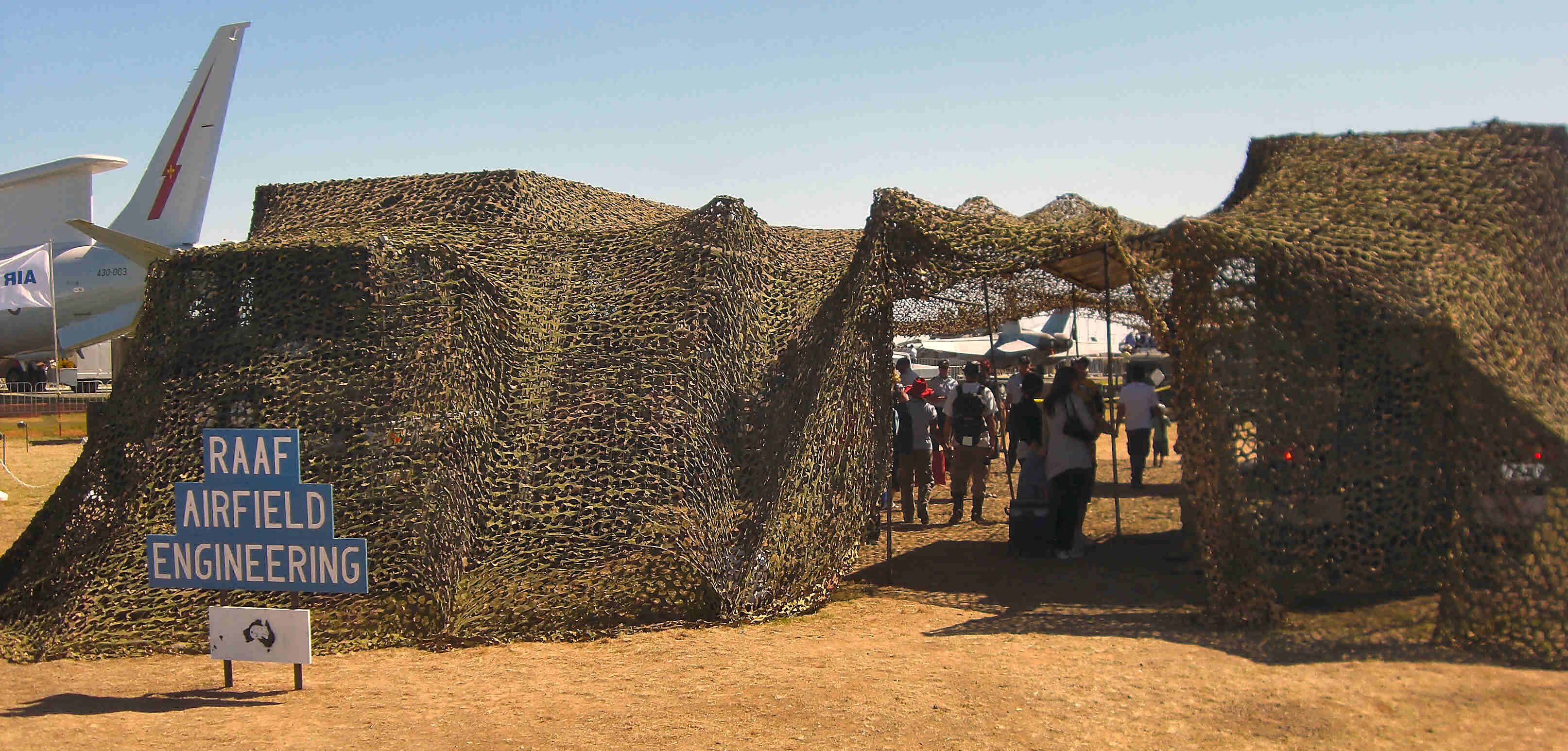
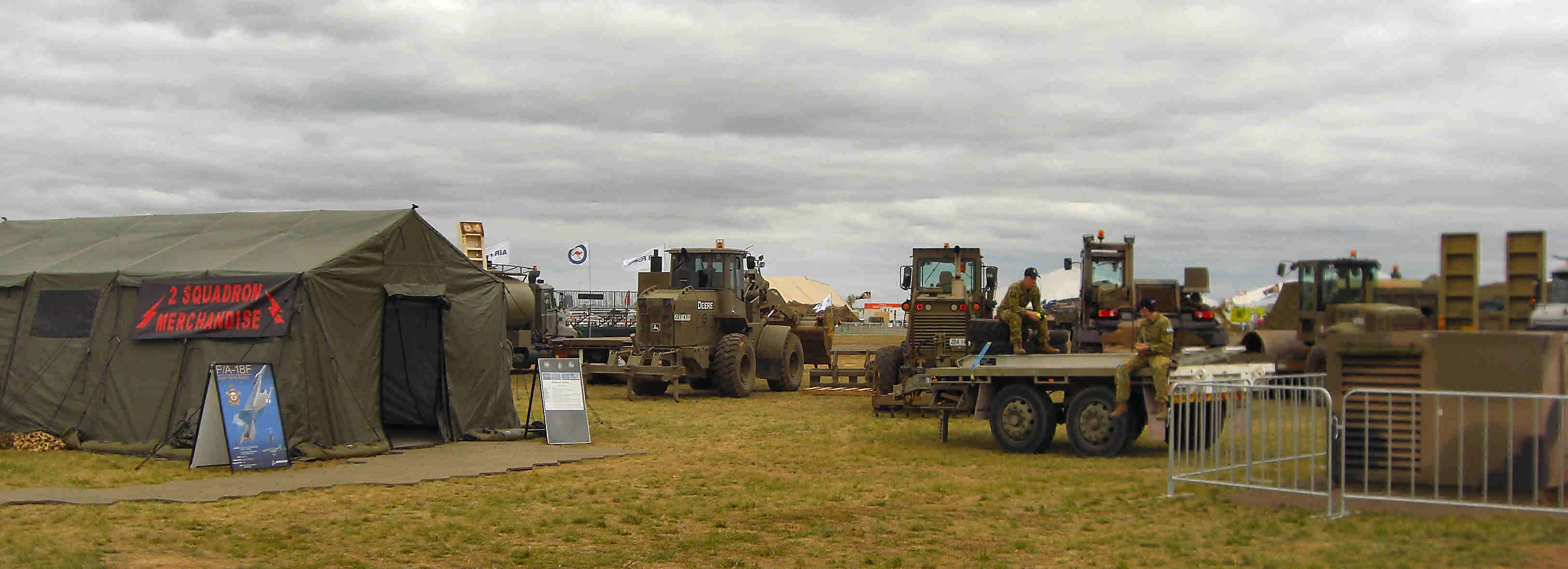
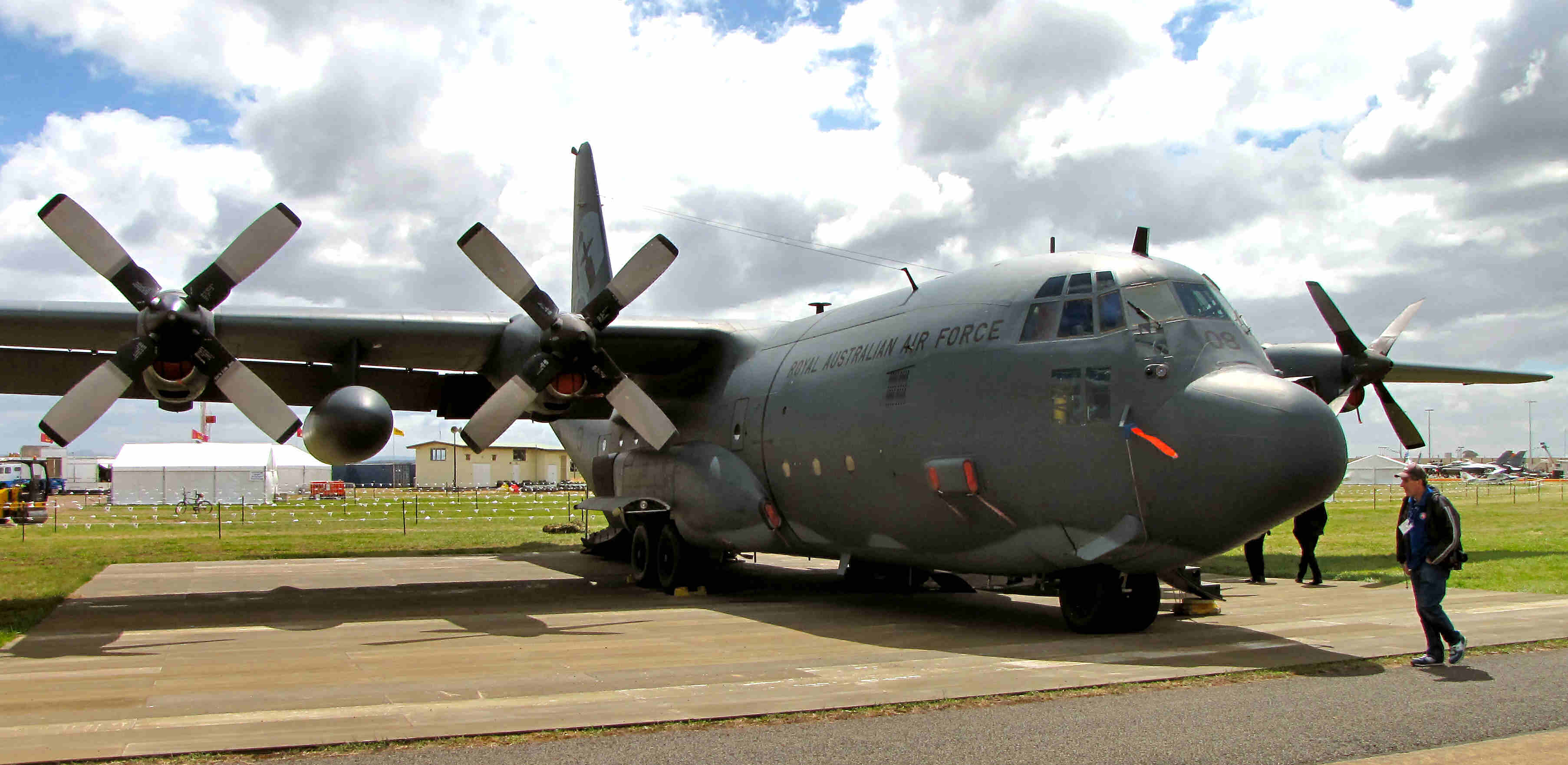
.jpg)
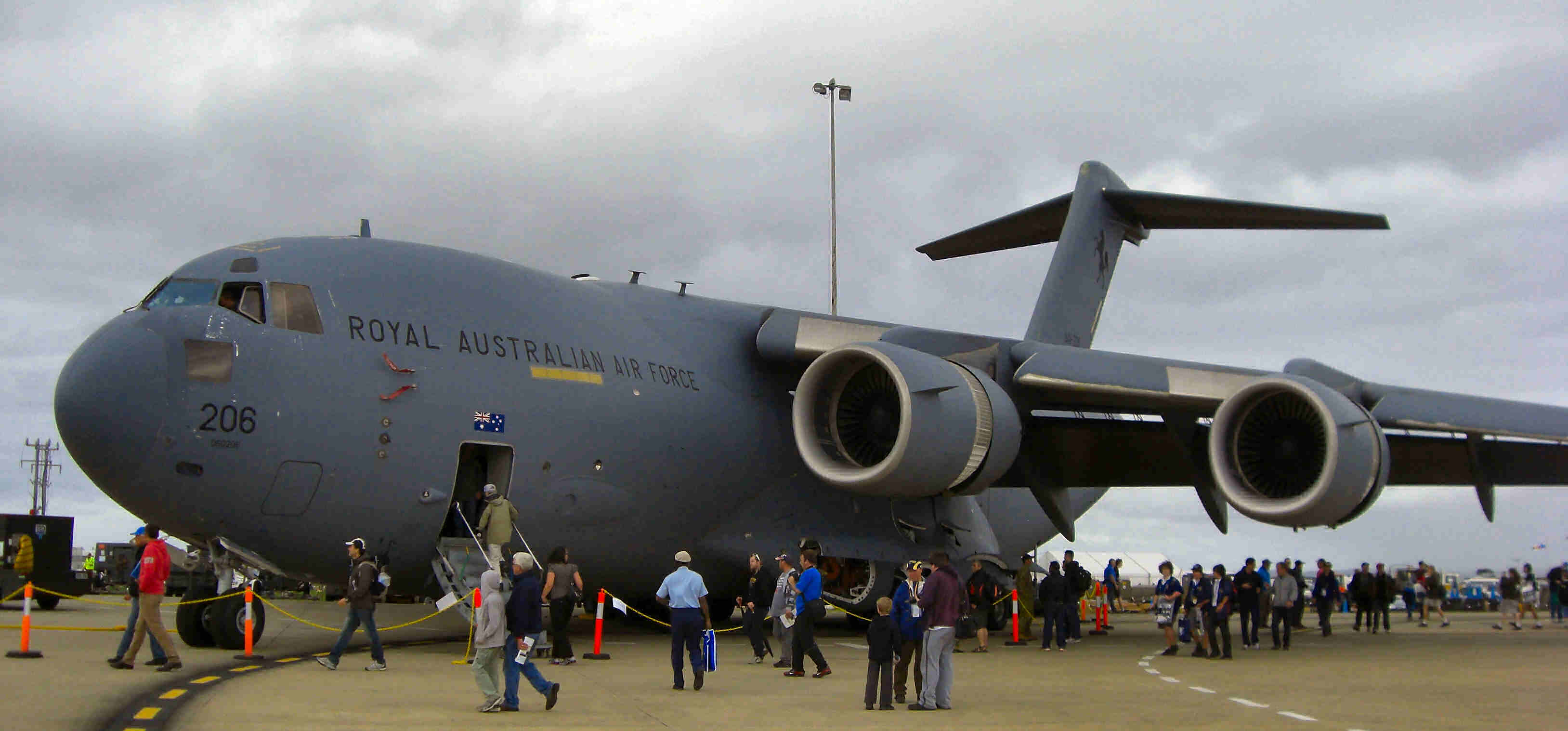
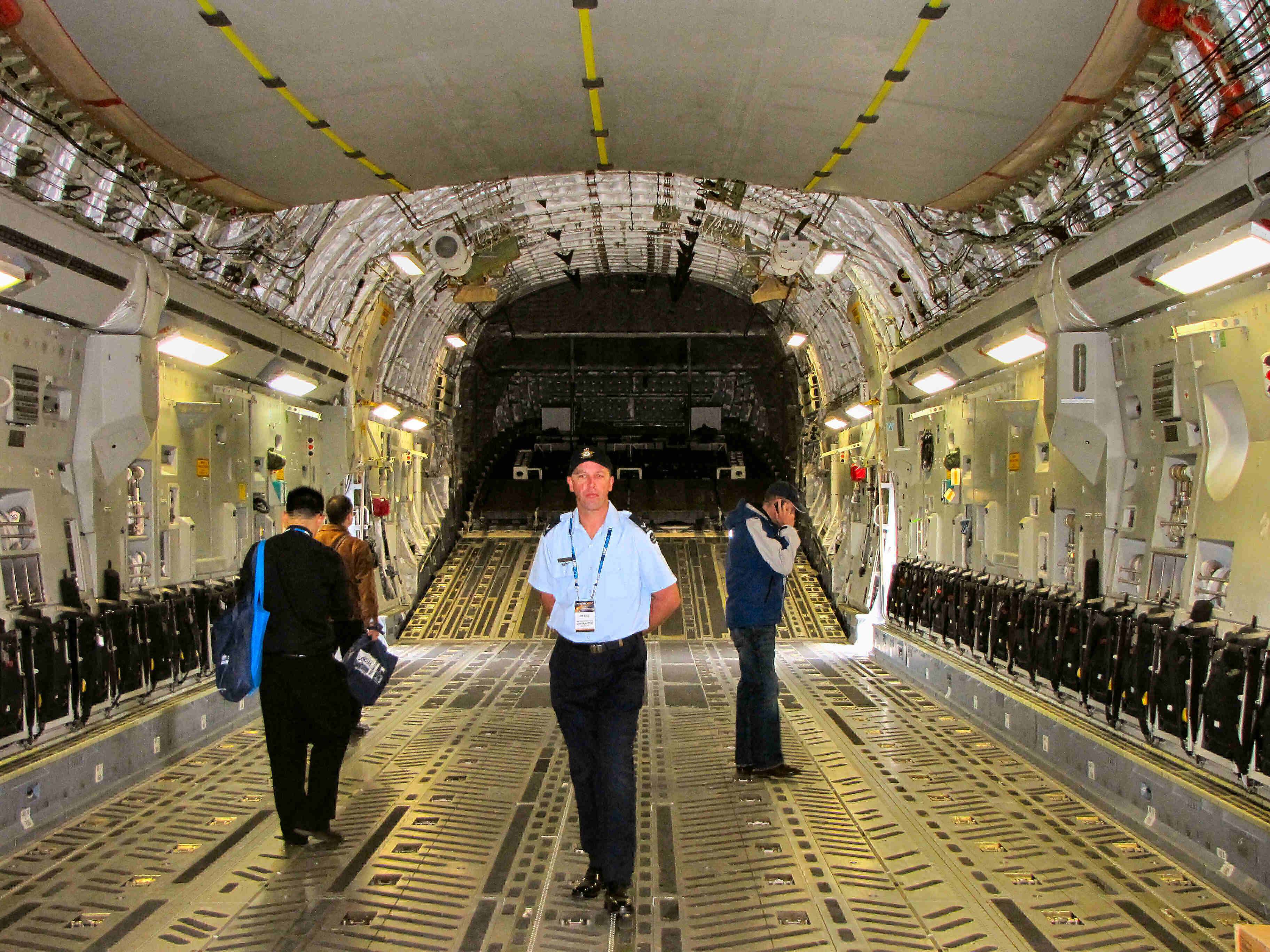
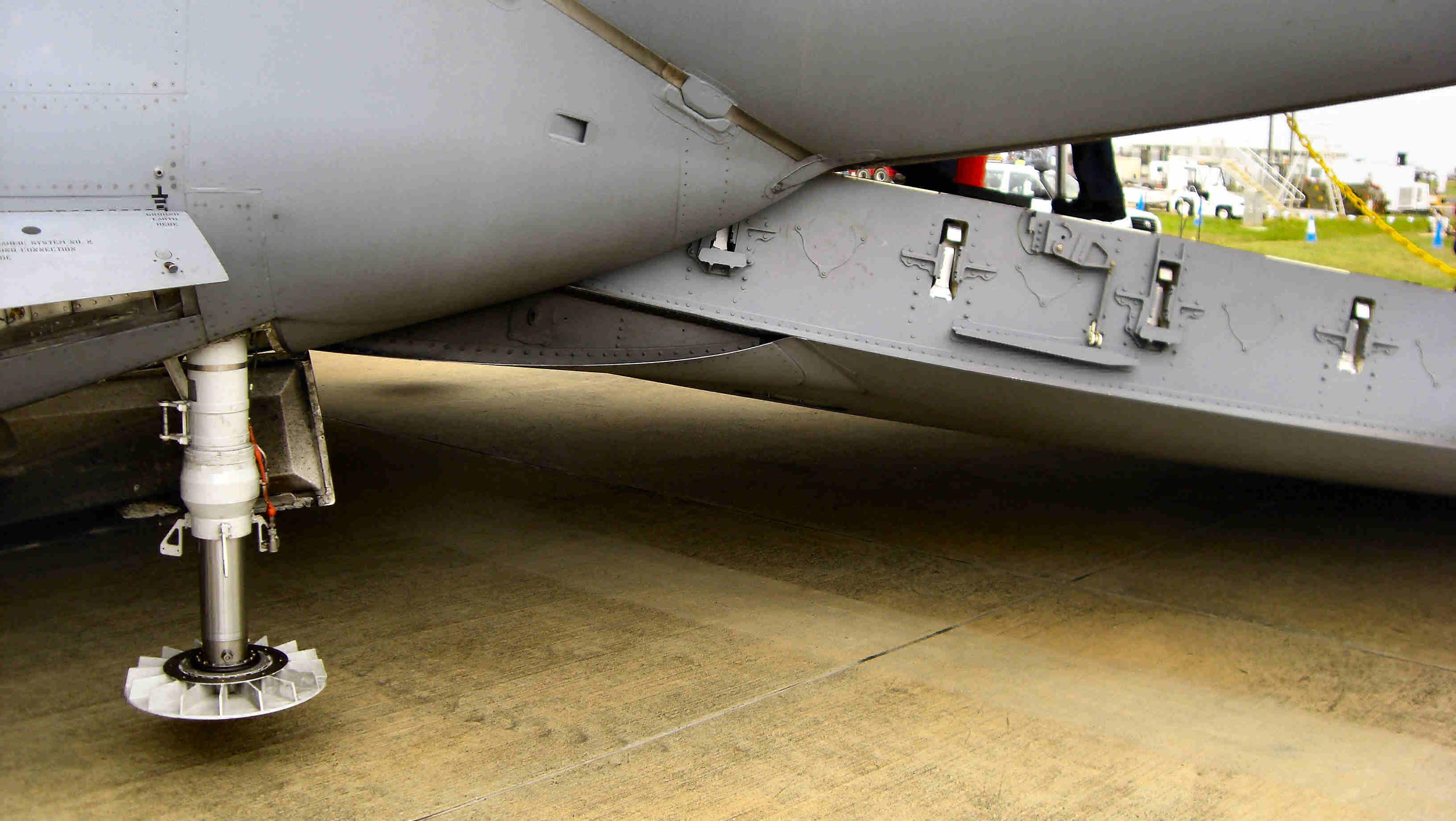
%20a.jpg)
.jpg) effective self-defence capability, is the most popular and reliable
jet aircraft in the world. Airlines and operators have ordered more
than 5000 with more than 3100 having been delivered.
effective self-defence capability, is the most popular and reliable
jet aircraft in the world. Airlines and operators have ordered more
than 5000 with more than 3100 having been delivered. 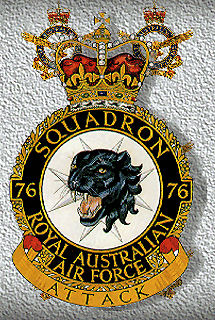 for a breather, then, equipped with newer Kittyhawks, returned to
combat operations at Goodenough Island, located north of New Guinea.
A succession of moves saw the Squadron operating from a number of
Pacific Island bases, until its final wartime deployment to Labuan,
where the Squadron supported the invasion of Borneo.
for a breather, then, equipped with newer Kittyhawks, returned to
combat operations at Goodenough Island, located north of New Guinea.
A succession of moves saw the Squadron operating from a number of
Pacific Island bases, until its final wartime deployment to Labuan,
where the Squadron supported the invasion of Borneo. .jpg)
%20(a).jpg) Training
and Operational.
Training
and Operational. .jpg)
.jpg)
